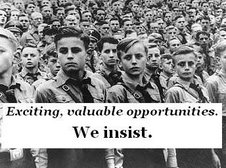I have long felt that one of the biggest problems with Government is the way that the Cabinet is appointed. Consider first how a large company appoints its management team and middle managers.
The Board/Owners select a CEO who they feel can deliver the growth and targets they set and that the CEO says are realistic. The Board/Owners will probably discuss the CEO's key direct reports and may maintain a veto. These positions might include the Finance Director, Operations Director and depending on the industry possibly one other, maybe the sales director in a company that requires on high sales volumes.
The Board will also discuss the overall management team structure and be concerned about the number of direct reports to the CEO, or any manager, and will be concerned if this is more than 6 or 7. Anything larger can mean that the CEO is stretched too far and is too involved in the everyday detail and is distracted from the greater strategic plan.
The CEO's direct reports will then agree a structure with the CEO, and rest of the management team, and look to recruit their reports. The CEO may take an interest and even veto who is appointed, but they will generally let their trusted direct reports get on with the job. It is important that the senior team have trust in their direct reports, which is why a good CEO won't interfere unless absolutely necessary.
This process then trickles down until the organisation is complete. The CEO and management team keeping an eye on numbers of people and ensuring that costs are kept under control and the company remains focused.
I could have gone in to lots of management jargon about SPRO (Strategy, Process, Resources, Organisation) etc, but I think you get the gist.
Now, compare that with the way our Government, irrespective of party, is appointed. We know the PM we are getting as the leader of the biggest party and probably the senior positions through the shadow cabinet or previous cabinet, but these aren't certain.
The first think we notice is that the cabinet is 23 strong and the PM appoints every one of them. That is one hell of a management team for the PM to manage and ensure that the agreed strategy is implemented. Its can also lead to tensions as areas of responsibility are blurred.
The next thing we notice is that the PM appointed the cabinets direct reports. He may discuss the appointments but is is very clear these are in the gift of the PM. This leads to major areas of conflict as he appoints people to departments who aren't trusted by their direct bosses and may even be actively disliked.
I realise that in a political party different factions have to be represented but the size of the Government and method of appointing them all isn't conducive to good governance and management.
Monday, October 06, 2008
Cabinet apointment process confirms control freakery of politicians
Posted by
Simon Fawthrop
at
Monday, October 06, 2008
![]()
Labels: management, politics
Subscribe to:
Post Comments (Atom)











2 comments:
You make a very good point indeed. What would you suggest as the solution? Having fewer cabinet members with broader portfolios, each member than having a greater number of junior ministers, who they appoint, to specialise in particular areas?
Thats just about the shape of it although I do wonder if we need all those appointments - a minister for Climate Change? What's he going to do? FFS it will happen whether we like it or not.
Intersting Guido makes a simlar point yesterday:
http://www.order-order.com/2008/10/gordons-big-government.html
• Gordon has 121 ministers, whips or law officers. Churchill required only 74 to defeat the Nazis.
• 154 Labour MPs (44% of the PLP) have an official job of some description.
• 33 people have the right to attend cabinet.
Post a Comment